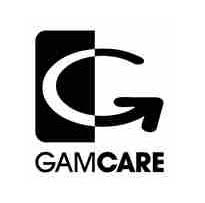Straights in Omaha Hi-Lo can be the very best hand – scooping you the pot. They can also be the most expensive hands of all… costing you many bets before you find out your hand is 2nd best for both the high and low sides.
This article takes a closer look at straights and straight draws in Omaha Hi-Lo poker. The concepts and principles apply to both the fixed limit and pot-limit variations of Omaha Hi-Lo, though players will need to adjust in many circumstances (there is a big difference between a pot sized bet on the river and one that is only 1/10th of the current pot after all!).
The very best low hand in Omaha Hi-Lo is also a straight. A-2-3-4-5 is known as the ‘wheel’. This hand will often scoop both the low and high sides of the pot – with the straight acting as a high. If an opponent has a better high hand then at least you have the nut low to show down.
While hands containing an ace and a two are usually playable in Omaha hi-lo, ensuring that you have another ‘wheel card’ in the form of a 3, 4 or 5 will give you many more possibilities of making the best low and a straight. This also avoids the danger of being quartered, since A-2 is a common starting combination.
Small straights which are not the best low hand will rarely win you more than half of the pot in Omaha hi-lo. For example 3-4-5-6-7 on an unpaired board with no flush possible may well win you the high side, however since there are at least 3 low cards on the board players with Ace-X (where X = a wheel card) are likely to have stuck around. In a multi-way pot it is possible to play these small straights, however there is a danger of a flush or full house coming on the river which can make this an expensive second best for the high and the low.
The worst possible straights in Omaha Hi-Lo are made using ‘medium’ cards from your own hand. For example with a holding of 6-7-8-K before the flop. There are so many disasters awaiting this hand after the flop that it should be discarded pre-flop every single time.
If the flop comes 3-4-5 you are almost certainly sharing the pot with a low and may be vulnerable to being out drawn for the high by a flush or trips turning into a full house. If the flop comes 9-10-J then you are already drawing dead for the high straight to an opponent holding Q-K and the common Ace + high card combinations mean that you will often make your straight at the same time as an opponent makes a better one – all in all a very expensive proposition.
Finally we look at the highest possible straights – after all, there is no low hand possible in 30% of pots in Omaha Hi-Lo.
Premium high-only hands are playable before the flop when it is reasonably cheap – for a single bet in a fixed limit game or for a small proportion of your stack in a pot-limit game. Playing these hands profitably relies on there being both no low hand possible and as many opponents as possible (preferably with those high / low hand combinations).
The idea is that you either hit a monster high hand on the flop or a huge draw with no obvious low. If not then you need to exit the hand fast! Those times you do hit a nut high straight with no obvious low or flush draw it can be possible to win a big pot.




